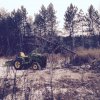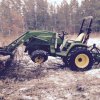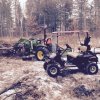"PEM" = palustrine emergent wetland, meaning the wetland is inland(i. e. not a tidal wetland) and not part of a lacustrine(lakeshore) or riverine(river slough or backwater) wetland system(i.e. it is a stand alone swamp), primary vegetation is above water. The "SS" =Shrub-Scrub wetland, meaning the primary vegetation consists of a minimum of 30% or more woody plants, such as willows, etc. The "1" = most of your woody plants are of the broad-leafed deciduous variety. And finally the "C" stands for seasonally flooded. Wow, the things you remember from high school forestry class. I did have to do a little research to find out what the 1 stood for.



